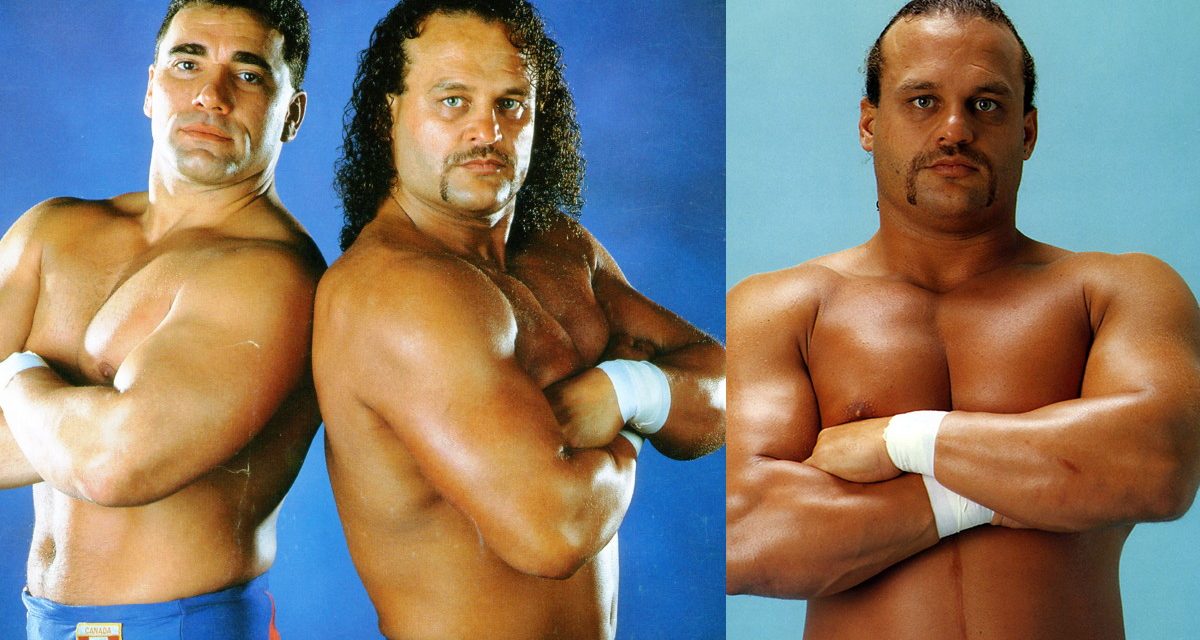In the end, our lives are really just a collection of memories. When a life ends, as it did for Doug Furnas on March 2, 2012, his heart giving out as he slept, it is time to call upon friends for stories. In Doug Furnas’ case, the rich, entertaining stories start in football and powerlifting, move into wrestling, then to the group home he ran, and finally, with the end of his road in sight and his health failing, a remarkable strength, different from the field, weight room or ring emerges.
Furnas almost never talked about himself. Interviews about his pro wrestling career are non-existent. He wasn’t the one in the Tennessee Volunteers dressing room to jump up and talk to the media. When he teamed with Lance Hickman to start a group home in San Diego for wayward youth, he let his partner do the talking.
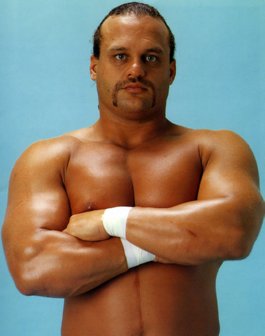
Doug Furnas, in 1994. Courtesy Crowbar Press
So it is left to others to do the talking for Furnas.
“He was a very private person, and he was a very humble person,” said Martha D’Acri Furnas, Doug’s widow. “He didn’t want to talk about what he had done. He just wasn’t that guy. That was one of the things I loved about him.”
Yet Doug was never shy with friends, and kept friendships up for years — if you had earned his trust.
“Doug did not like his business talked about at all. You were either in the circle or you were out when it came to Doug,” said Jeff Whitt, a Knoxville, Tenn., lawyer who was a roommate and later handled Furnas’ affairs, especially when he was on the road, wrestling around the world. “He was very open at the right time, but Doug was very stern. He was suspicious of some people; he would think everybody had an angle, so to speak. He wasn’t going to be your victim, let’s put it that way. So he wouldn’t share that kind of information or his opinions about the guys because he just didn’t want to be that guy who would talk about it. Everything was private to Doug.
“He never talked about himself. He’d talk about his brother, he’d talk about his friends, or he’d talk about others, but he wasn’t going to talk about himself at all.”
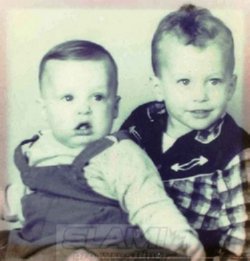
Big brother Doug Furnas with his younger brother Mike. Courtesy Martha Furnas
At Furnas’ funeral on March 10, Phillip Fulmer, one of his coaches at UT, took to the podium in Commerce, Oklahoma’s high school gymnasium, having travelled halfway across the country in a chartered plane, replete with family and football colleagues, to pay tribute to a player that he trusted enough to babysit his daughter.
A couple of days before the funeral, Fulmer, now a college football commentator, having served as the head coach of the Vols for 17 years, shared his memories of Furnas.
“He was one of those guys that go to work every day and be the best that he could be, and enjoyed the people that he worked with, and enjoyed what he was doing — in whatever it was that he was doing at that particular time,” Fulmer told SLAM! Wrestling. “He had a really unique personality. Coming from Commerce, he had the common sense of Oklahoma people, and lived in San Diego for a long time; even when he first came to Tennessee, he kind of had some of that California cool in him. He was an interesting guy.”
Dwight Douglas Furnas was born December 11, 1959, in Miami, Oklahoma, to Wayne and Mary Furnas. He had one brother, Mike, who would play football with him at UT and even dabble in pro wrestling, and three sisters, LaWayne, Pam, and Terri.
The family farm was the center of their universe, and Wayne and Mary still live there, with their 60th wedding anniversary approaching on April 7th. Besides the chores on the farm, the whole family took part in various rodeo events; for Doug, it was bullriding that he excelled in, and later he would raise and breed bulls.
“We grew up in a very small town, went to a very small high school, raised on a farm,” said Pam Gray, Furnas’ sister, who followed her brother into competitive powerlifting.
Those values stuck with him his whole life, said Martha Furnas. “His work ethic, he just never quit. They grew up on a farm and they worked really hard.”
Furnas began playing football in the third grade at Commerce, a town best known as the home of Mickey Mantle, and never stopped until 1983, when his tryout with the Denver Broncos didn’t go as expected because of a pulled hamstring.
At 5-foot-10 and 190 pounds in high school, Furnas led his high school team in rushing as a sophomore. It was also in high school that he really got into weights and powerlifting. Everything took a back seat, however, when he had to sit out his entire junior year, recovering from injuries incurred in an automobile accident. Doctors at the time didn’t think he’d walk again, let alone play football.
In his senior year, Furnas showed his versatility, leading a team of Oklahoma’s finest into the annual Oil Bowl, against the best high schoolers Texas had to offer. On a wet field on August 10, 1979 in Wichita Falls, Tex., Furnas hit field goals of 29 and 25 yards to seal the Sooners 14-6 win in the 42nd annual schoolboy football all star classic.
“It sure feels good to win,” said Furnas in the Associated Press story, described as a “soccer-style kicker.”
Up next was the junior college, Northeastern Oklahoma A&M, in Miami, where Mike was an offensive guard and Doug a running back and blocking fullback. Doug was recruited by Doug Matthews, the positions coach, to the University of Tennessee in Knoxville, for the 1981 season, and Mike followed a year later.
During his two seasons, 1981 and 1982, Furnas played in all 22 regular season games as well as two bowl games. His 4.6-yard rushing average on 136 carries for 630 yards, with two rushing touchdowns, only begin to tell part of his football story.
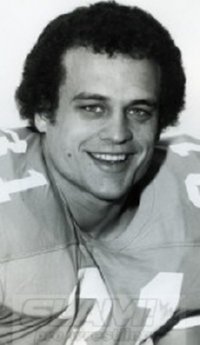
Doug Furnas with the University of Tennessee football team.
“He was a heck of a football player. He played fullback for us in an I-offense. He was just one of the guys that didn’t get a lot of hype, but filled the positive very, very well,” said Fulmer. “He was very popular. He and his brother Mike came from junior college together and played, and both of them were outstanding players for us. It was a little bit unusual to have guys from Oklahoma, and then brothers particularly.”
Doug made an impression — literally — on his teammates.
“A fullback in an I formation is a blocker primarily, which he took great pride in and he was very good at it. He truly enjoyed contact. He loved to hit. When he had a good hit, that brought a big smile to his face. He wasn’t a mean-spirited person by any means. He just loved the competition and the contact. He loved to hit,” said Glenn Streno, one of the centers.
Lee North, another center, said Furnas was always “running up and hitting me in the back about half the time. He hurt, trust me, he hurt.”
Streno chuckled at the memories. “We used to joke with him, we’d open a hole for him, and he’d get into the open field and run right at the safety. We’d say, ‘Doug, don’t do that!’ He would just try to run the guy over. ‘Doug, run away from the guy! Go to the endzone!’ He’d break through and seek out the defensive back and run right at him, just to get that contact and run over him.”
Wrestler Ron Wright, who would later be one of the wrestlers who helped Furnas get started, recalled Furnas on the football field in an interview with Kayfabe Memories. “Lord, I remember when he played football it was nothing for him to go 10 yards with 3 or 4 tacklers hanging on.”
While at UT, Furnas was hardcore into powerlifting. He won the National Collegiate Powerlifting Championship, and still holds records set in 1983 in the squat (881.75 pounds) and deadlift (766 pounds) for the 242-pound weight class. At the conclusion of his powerlifting career, Furnas had 29 world records.
North said he told the story of meeting Furnas all the time. He was wakened in his dorm room to come down and spot a new recruit in the weight room. Recruits came to campus all the time, but few wanted to hit the weight room. Reluctantly, North went down.
“I show up and Doug is there warming up on squats. As you know, he was about as strong as anybody ever has been in the squat. He’s warming up on more weight than anyone on the team has ever done. It was incredible, 500-600 pounds. I remember sitting there Saturday morning, and he had around 700 pounds on him, and I said, ‘If he drops this and hurts himself, they’ll probably run me off with him also,'” laughed North. “This was incredible what this guy was doing. He was the strongest human being, especially for his size. He wasn’t an overly huge person. That’s the first time I ever met him, when they had me spot him there in a weight room. It was a good start from there, I was ready to sign him right then!”
Hitting the weight room was not a regular thing for football players in that era, said North. “Once you realized what he was doing was right and helpful, and how it could help you, I remember that everybody listened to him; everything he’d tell us about lifting, you’d obviously go along with it because the results are standing there in front of you. I always enjoyed lifting, but he was an inspiration just to watch.”
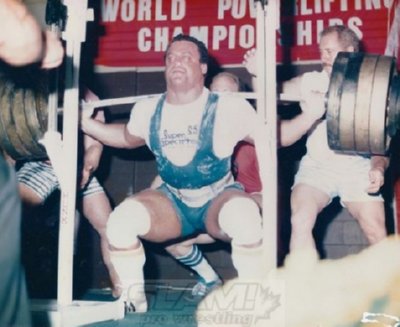
Doug Furnas makes a lift at the World Powerlifting championships. Courtesy Martha Furnas
Streno noted that Furnas was hardly a muscle-bound monster — he could really move. “The first thing you notice, is those legs, his size. He wasn’t very tall, but he had that stature, the muscular stature,” said Streno. “When you see people like that, they’re typically not as athletic and fast. He had really good speed too. That was the unusual thing about him, is that he had the athleticism and the speed to go along with his strength and size.”
That speed and agility — he could dunk a basketball, do the splits, and backflip from a standing position — would come in handy in pro wrestling.
It was Bob Polk, who worked in the Continental wrestling office (later known as USA) in Knoxville that got Furnas into a new line of work.
“I think he was working out at a place called Doc’s Gym in Knoxville. It’s a small town, and he was already a legend,” Polk recalled. Mutual acquaintances had tipped off Polk that Furnas might be game for the career change. “I went to see him and told him what I knew. He told me he was interested, so I actually paid for his training.”
The trainer was Rick Connors, who had a hand in schooling a lot of local wrestlers, including Tim Horner, Buddy Landel, Denny Brown, and Dirty White Boy, and had been an undercard guy in the ’70s.
“You couldn’t have asked for a better prospect,” said Connors. “When I got hold of him, he was probably the stronger powerlifter in the United States. That’s a pretty good prospect. I sure as hell didn’t have to get him in shape, that’s a fact. As a raw prospect, he was tremendously strong. Doug used to get a real kick out of me. He’d say, ‘I’m the strongest powerlifter in the United States, I live a clean life, I eat the right kind of foods. I come over here and you smell like beer and cigarettes, and you still kick my ass.'”
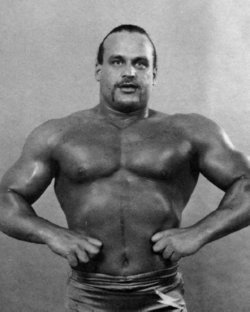
Doug Furnas strikes a pose. Courtesy Crowbar Press
Because he was so likeable, and soaked up knowledge like a sponge, Furnas got lots of help, said Polk.
“I’m sure everybody helped train him. There were a lot of great, great wrestlers in that era — Bob [Armstrong] and all his boys, they were all friends with Doug. Davey Rich was a very close friend, and Johnny Rich. They all helped train him. They liked him,” Polk said.
Danny Davis, who runs the Ohio Valley Wrestling promotion and school, and who has polished some of the biggest stars in wrestling today, was one of those boys who helped Doug progress. But it was a trade, stressed Davis.
“Bottom line was he wanted to get into the wrestling business and I wanted to learn how to lift weights,” said Davis from his Louisville, KY, office.
Recognizing that the business in the 1980s was moving towards muscle-bound behemoths, Davis wanted to improve his look.
“Doug had high expectations for anybody that he took the time with to help in the gym. If you were a slacker, and you didn’t do what he asked you to do, he didn’t have the time of day for you,” said Davis, who stuck it out. “When I met Doug, obviously you took one look at him and you knew he knew what he was talking about.”
Davey Haskins, who wrestled as the “brother” of Tommy and Johnny Rich, was one of those who didn’t last in the weight room.
“He was different than the other guys, he was almost like a big brother. Me and Johnny Rich and Scott Armstrong did a little gimmick up there in USA called the Party Boys,” said Haskins. “It’s was funny, we were like, ‘Man, Doug, please help us work out.’ We worked out with him one day, and of course we went out that night and we didn’t make it in the next day. He says, ‘Enough of that.’ He didn’t have time to fool with us if we weren’t serious.”
Furnas’ initial matches were for Continental, run by the Fullers, with shows from Tennessee to Southern Alabama and Northern Florida.
“He started off right, he started off slow, with a small outfit, and he learned the ways and means. The main thing in the old days, I don’t know about now, but in the old days you learned about what not to do — not what to do so much as but what not to do,” said Connors. “He was good at that. He had great athletic ability, so he never really had any problem with it. I think sometimes he might have scared guys because of his strength, because he could sling you around.”
When Haskins made the move from Mid-South to Continental, he was told to call Furnas — who he had never met — about a place to stay. He ended up living with Doug and his first wife, Jody Thompson.
“It’s funny, we started calling Doug ‘Condo,'” laughed Haskins, who would learn that Furnas’ favorite show was The Beverly Hillbillies. The Furnas condominium was called “The Mission.”
Furnas was different than the other wrestlers, said Whitt, who roomed with him, having been introduced by mutual friends. For one, Furnas didn’t drink beer, as Whitt learned the hard way. “He came in and saw it and started throwing [beer cans] at me. We started whipping them back and it was all cool. But it was just not the lifestyle that he led. We used to tease him all the time — you can’t be one of the boys unless you’ve gone bankrupt, halfway OD’d on drugs, and had three kids by three different women; that’s the only way to be one of the boys. But he never had any of those, he never lived that life.”
In short, Furnas was ahead of his time said Haskins. “Twenty years ago, he was drinking ice water and eating chicken breast, and we’re all drinking and acting like a bunch of heathens. He’s gone and we’re all still here. Never, ever saw him take a drink, never, ever saw him — I lived with him two years, and I know everybody, ‘I know he’s all juiced up’ — I never saw him do any juice, and I was with him over two years. That’s not to say he didn’t, but I never saw it and I never saw it in the house.”
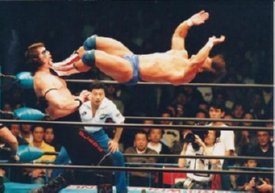
Doug Furnas’ dropkick was among the best ever. Courtesy Martha Furnas
Jody Simon, who worked as Joe Malenko, was one of two wrestlers at Furnas’ funeral (the other was Davey Haskins). Simon was so close to Furnas that he earned the nickname Sky Low Low for his diminutive size. He got to know Furnas in Japan.
“Doug was always a reserved guy. That was his persona. When you pierced that veil of reservedness, he was jokester, he was a ribber, he loved to mess with your mind,” Simon said. “It was all a front for who he wanted to portray out there. The reality is the guy was extremely warm, extremely caring, very, very loyal. You had to laugh with him.”
Simon knew it was impossible keeping up with Furnas’ strict diet plan. “He would eat the same thing all the time. He had this rice and meat, sometimes with tuna or chicken, then some veggies, that was his concoction,” Simon said. Opening his plastic container with his meal, Furnas would perhaps treat himself to a little sweetener on the food. “He was the strictest dieter that I’ve ever known in my whole entire life. I tried my best to stay pretty clean around him, but I couldn’t, because I love shit. I’d kind of sneak around, I’d be in a Kentucky Fried Chicken, sitting there in the Kentucky Fried Chicken, grease dripping off my jowls, and sure enough, I’d see him. He’d stick his head in the door, or he’d just kind of shake his head and walk off. ‘That’s great, thanks. I already feel bad, bastard!'”
The wrestling exploits of Doug Furnas have been pretty well documented. After starting in Knoxville for Continental, he got a break in Japan, where he would team with Canadian Phil Lafon as the Can-Am Express for years. He had a brief run in World Championship Wrestling as one of Sting‘s Dudes With Attitudes in 1990.
Furnas and Lafon would win tag titles in Japan, Mexico and hold the ECW tag belts for a very brief time.
“Giant Baba put us together as a tag team,” said Lafon, adding that they worked well as a team during their eight years together. “We were both hungry. We were young, hungry, strong.”
While perhaps not the top gaijin team in Japan, Furnas and Lafon were always in the mix in All-Japan, and their 1992 bout with Kenta Kobashi and Tsuyoshi Kikuchi was the Wrestling Observer match of the year — remarkable in an era of just tape trading.
Del Wilkes, who wrestled as The Patriot, became one of Furnas’ best friends through their time in Japan, and was the best man at Furnas’ second wedding, to Martha, on May 12, 1995 in San Diego.
“We ate together every night, we went out to the restaurants. Most nights we would just fix something there in my room, and just sit around and talk, sometimes to 2, 3, 4 o’clock in the morning,” said Wilkes. “With Doug and I, we worked out at the same gyms, we ate at the same restaurants, we went to see movies. It was almost like a husband and wife deal.”
Wilkes was a fan of the work of the Can-Am Express. “You had Philip’s creativity, whether it was setting up a match or just doing stuff on the fly; Philip had unbelievable creativity and Doug was a phenomenal athlete, one of the greatest athletes I’ve ever been around,” said Wilkes, who trusted Furnas completely.
“There were certain things in the ring that I would let Doug do to me that nobody else would even come close to doing, because of the tremendous amount of strength that Doug had. This guy was legitimately one of the strongest men in the world. There were certain suplexes and certain throws that if anybody else had come to me about doing, I would have said, ‘You’re crazy.’ But Doug was some doggone strong, and he was such a professional, that I knew that Doug could do it time and time again, and never hurt me — and just set me down like a baby.”
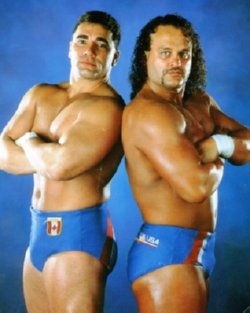
Forever linked as a tag team, Phil Lafon and Doug Furnas, the Can-Am Express. Courtesy Chris Swisher, www.csclassicwrphotos.com
The first time Simon faced Furnas and Lafon in the ring in Japan, Lafon loosed one of Simon’s teeth, and Furnas knocked it out; on another occasion, Furnas would knock out the replacement tooth. For all these skills inside the ring — “Doug was athletic. Phil was the consummate worker.” — Simon respected Furnas and Lafon for their friendship.
“Phil had his struggles in his life and Doug, this is really one of the things that really sent me to Doug, he was so loyal to Phil and made sure that Phil made it through a lot of difficult times in his life — and looked out after him, like he was supposed to do that, that that was his deal. ‘If I’m going to be your friend, and especially going to be your partner in the ring, which makes you my friend, I’m going to make sure you’re okay. I’m going to look after you. I’m going to take care of you.’ That was what Doug did with Phil,” said Simon.
Lafon put it simply: “I loved the man.”
The WWF run of Furnas and Lafon, from 1996-98, never saw them truly achieve the heights many expected. They worked often with Davey Boy Smith and Owen Hart.
A car accident in June 1997, near Hawkesbury, halfway between Ottawa and Montreal, was really the turning point for the duo’s WWF career. Wilkes and Sid Eudy (Sid Vicious, Psycho Sid) were also in the car. Lafon was hurt the worst when the rented Cadillac, driven by Eudy, went onto the soft shoulder of the road and flipped five times.
“After our car accident, they kept paying us. After about five months, we went back and did a couple of shows here and there. Basically, it wasn’t working out. We went down to ECW,” said Lafon. “They called up one day, Bruce Prichard says, ‘We’re banging our heads against the wall and we just can’t come up with a gimmick for you guys, so we’re going to give you a three-month release.’ That was it.”
His widow said Doug never had any regrets — about anything — not just the aborted run in the world’s biggest wrestling company. Furnas would only wrestle until 2000.
“Doug was always ready when he was ready to have each act — I don’t know what you’d want to call that — each segment of his life go to the next stage of whatever his next challenge was going to be. He always had a lot of completion within each of those. I think he felt complete because he put so much into everything he did that there was never a regret about what he should have or could have done. He just didn’t live that way,” said Martha. “He was a very uncommon person. I got to experience what a high bar was on expectations by living with him. He was demanding of himself, so he just didn’t ever leave much on the table. So he never had those kind of regrets. He had great experiences and everywhere he worked he enjoyed it. When he finally got out, it was time to get out.”
Unlike many wrestlers, Furnas had invested his money wisely. His wife, Martha, whom he met in July 1988 at a powerlifting event in Las Vegas, where he was helping friend Ed Coan, was employed at GEICO insurance, as well, so he had financial stability.
His lawyer, Whitt, said that Furnas was “more than smart, he was brilliant” with his investing. “Doug didn’t waste money. I used to tease him, his biggest expense was a telephone bill, calling people back and forth.”
Besides the phone bill, Whitt said that Furnas was a big supporter of the family farm, and raised bucking stock bulls following his retirement from wrestling.
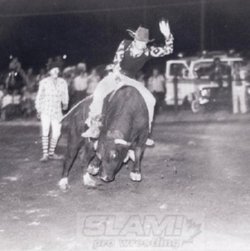
A young Doug Furnas proves his worth in bullriding. Courtesy Martha Furnas
Furnas would call Whitt about wiring some money.
“Coach, I need $2,500.”
“What am I sending $2,500 for?”
“Got some new bull semen. It’s going to be good stuff.”
Post-wrestling, Furnas faced a fork in the road and chose to help others with his time. He’d always contributed to charities with his money, said Whitt, but his next investment would change lives.
“His family is a very compassionate, giving family and he was raised to help people. So ultimately he got into social work,” said Martha.
Furnas applied to work at a treatment center for abused girls and boys in San Diego. “I was struck by him right away. I’ve done this work for 22 years, and I didn’t need much of the interview — I just knew,” said Lance Hickman, who did the interview and became Furnas’ partner in a group home. “He goes, ‘I just want to help kids.’ He wasn’t worried about salary, he wasn’t worried about money, he wasn’t worried about anything. He just wanted to get in and start helping kids. I hired him right away.”
As Hickman and Furnas became friends, they realized they had similar philosophies, and they both felt a little constrained by the company they were working for. Furnas asked Hickman what it would take for Lance to start his own project. Hickman responded that it would take $100,000 in liquid cash just to begin.
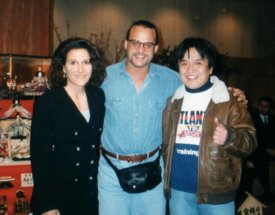
Martha and Doug Furnas and Japanese superfan Masanori Horie in 1996. Photo courtesy Masanori Horie
Furnas opened his chequebook, and on February 19, 2004, Varsity Team Inc. opened a group home — in Doug and Martha’s home in the San Diego suburb of La Hoya.
“It was his house. It was a very nice neighborhood that he lived in. It didn’t bother him at all to go talk to the neighbors and say, ‘Hey, this is what we’re going to do. We’re doing it for kids.’ We believed that the environment was 60% of the battle for these kids,” said Hickman, sharing the philosophy that if a child has a nice home to come home to, there is less than he/she would run, and therefore the social workers can do their job.
Until Varsity Team Inc. was able to hire four more employees, Hickman would show up at Doug’s home in the morning, help the kids, drive them where they needed to go during the day. At night, it was just Doug and three Great Danes — Martha was transferred in her job to Tuscon, Ariz., in 2003; on weekends, Doug would often take off to see his wife.
Often, Furnas would take the kids to the gym with him. “He’d make them hit the weights. It’s funny, these kids would start enjoying it. They loved Doug to death,” said Hickman, who would occasionally throw on a DVD of Furnas in action in wrestling or even powerlifting.
“He was very proud of his health and how he looked, and he wanted the kids to go work out — not to bulk up and be Mr. Olympia, but to work out, get stronger, and try to put something different in their lives, because all these kids had seen was abuse, abandonment or neglect,” said Hickman.
While Furnas and Hickman were getting the group home started, Furnas was diagnosed as having Parkinson’s Disease, a brain disorder that leads to shaking, difficulty walking and lessened movement and coordination.
Furnas decided that he needed to focus on being healthy, and if he stayed in San Diego, he wouldn’t be able to commit himself 100% to the work in the group home. So he moved to Tucson.
“His sole goal was to become as healthy as he could with the challenges of his disease,” said Martha.
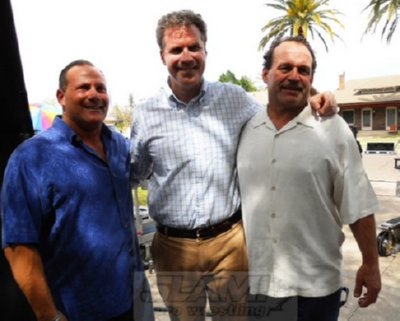
Jody Simon, who wrestled as Joe Malenko, Will Ferrell and Doug Furnas on the set of Everything Must Go, in 2010. Simon was an executive producer. Courtesy Jody Simon
The couple, who never had children, lived near Mount Lemmon, and Tucson is a cyclist’s paradise. “I got here and started cycling and then he got into it. He would ride. He would do 100 miles in a day, which is not crazy; you’ll meet people in your life do that, but Doug did that routinely,” said Martha. “He just attacked it like he attacked everything else. He loved the Trek bike that he had. That provided a lot of relief for him with Parkinson’s; that exercise is so critical, rest is so critical, diet is so critical. Really what he was trying to focus on was to get all those things working symbiotically so he could be as healthy as he possibly could while he fought it.”
Though his focus had switched to his own personal battle, Furnas still found time to show he cared about others. On a trip home to Oklahoma, he met with an old friend who had lost her hair battling cancer. To show his solidarity, Furnas shaved his head right there in her living room.
Traveling the country, Furnas would make a point of visiting old friends, even after Parkinson’s and the regular trials of a physical lifestyle had deprived him of so much.
Polk had lunch with Furnas last May, when Doug was in town for a wedding. “He looked better than I thought he would. He’d struggled with Parkinson’s, and we’d had some long conversations about that, the things he was trying to do to combat the disease. Actually, we had a real good day. He was mentally sharp. I hadn’t seen him in a few years and physically, he was better than I anticipated.”
Whitt had kept in touch, talking every couple of weeks, hearing of his friend’s ups and downs. “He’d been sick for a long time. He’d had some bad bouts. He’d go through a rough few weeks, he’d go through some bad few weeks, that Martha, unfortunately, had to live with. For somebody who had been in such great health for their entire life and was the epitome of strength, it was tough for him.”
In Reno, Nev., he met with Haskins. “It was almost like he was chiseled like a Greek god. He had those huge legs, unbelievable. He’d almost shrunk completely down. He’d had shoulder replacement, knee replacement, hip replacement,” Haskins said of their July 2011 meeting. “He was just Dougie. It’s so ironic, the boys are so macho, but when he was here in July, he, out of the blue, just hugged me — ‘Hey man, I love you.’ I can’t say any of the boys have ever done that before. That’s just the kind of person he was.”
RELATED LINKS
- Mar 30, 2012: Feature: The remarkable strengths of Doug Furnas
- Mar 6, 2012: Cause of death for Doug Furnas revealed
- Mar 4, 2012: Doug Furnas dies in his sleep
Greg Oliver chased Doug Furnas for the book The Pro Wrestling Hall of Fame: The Tag Teams (co-authored with Steve Johnson), and now fully understands why that interview never came to be. Greg can be emailed at goliver845@gmail.com.
